Character Spotlight, Comic Book Review, History Of Comics
10 Greatest Spider-Man Covers of the 1960’s
by Joshua H. Stulman
Spider-Man is among the most famous super-heroes and most widely collected comic book series. Everyone has something of Spider-Man in their collection! When Stan Lee re-started Marvel Comics in the 1960’s an era known as the Silver Age, he originally led with the Human Torch set to be the mascot of Marvel, after all he was one of the first Marvel super-heroes to debut back in Marvel Comics # 1 (1939). Stan Lee reformatted him as part of the Fantastic Four (1961). The Torch quickly built a fan following and was awarded a solo series in Strange Tales beginning in 1962. However, along came a Spider-Man in 1962 and quickly overtook the Human Torch in popularity. The two met in Amazing Spider-Man # 1, 3 and 8 and also in Strange Tales Annual # 2 (1963), but soon after Spider-Man was crossing over in Avengers, Fantastic Four, Giant-Man, and Daredevil in his early years. Fans loved his snarky humor and confidence as hero, while mired in personal problems in his civilian life. Marvel artists, Jack Kirby, John Romita and Steve Ditko continued to develop sophisticated and compelling covers to entice fans to pick up the web-slinger’s newest exploits.
Below are 10 of the Greatest Spider-Man Covers from the 1960’s. They were picked based on their artistic quality, composition, and pure excitement. So yes, its fairly subjective but we hope you enjoy!
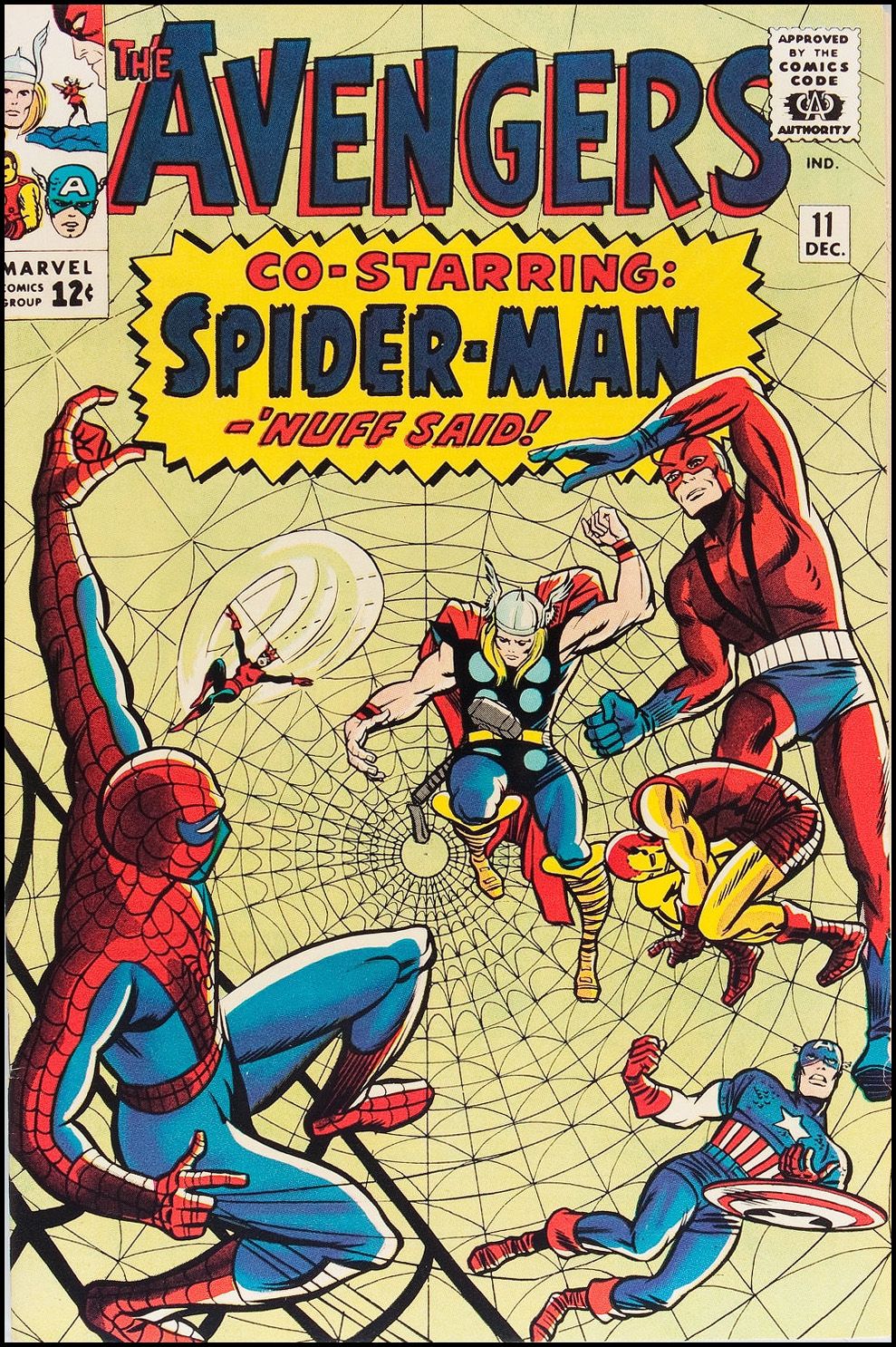
10. Avengers # 11 (Dec. 1964)
Spider-Man has already got the Avengers tied up on the cover. If you didn’t know who Spider-Man was in 1964, you sure wanted to know who could possibly be strong and smart enough to beat each of Marvel’s greatest heroes! The cover composition was laid out by the king, Jack Kirby with some finishing on Spider-man and Giant Man by Steve Ditko. Spider-Man is prominently featured on the cover with a large blast announcing his appearance. Notice how his size takes up almost the same space as the entire Avengers team. A beautiful use of the spider-web motif by Kirby simplifies the background and keeps the focus on Spidey!
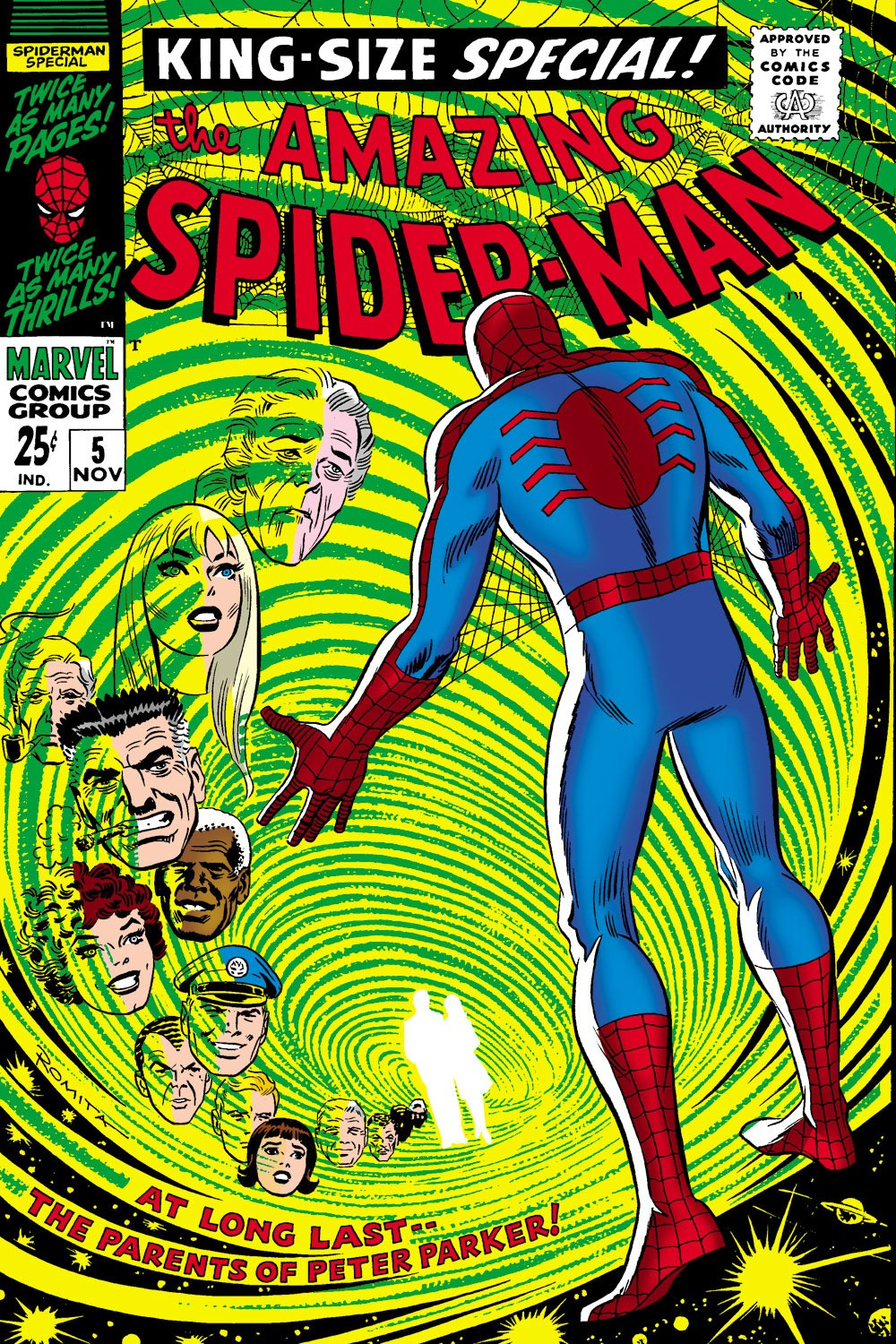
9. Amazing Spider-Man Annual # 5 (1968)
Usually covers are not as exciting when the main hero has his back to the audience. However there’s an exception for this cover by John Romita. The cyclone motif with the portraits of Peter Parker’s entire cast leading back to the mysterious couple in white, is so compelling you can’t stop but wonder what exciting drama is about to unfold. This is the first time the story of Spider-Man’s parents were ever explored. If you’re wondering, yes, the story is just as exciting as the cover! But we’ll just have to leave that for another article. Also, the cast portrait motif was used by Romita several times for Spider-Man including during the Death of Gwen Stacy in Amazing Spider-Man # 121.
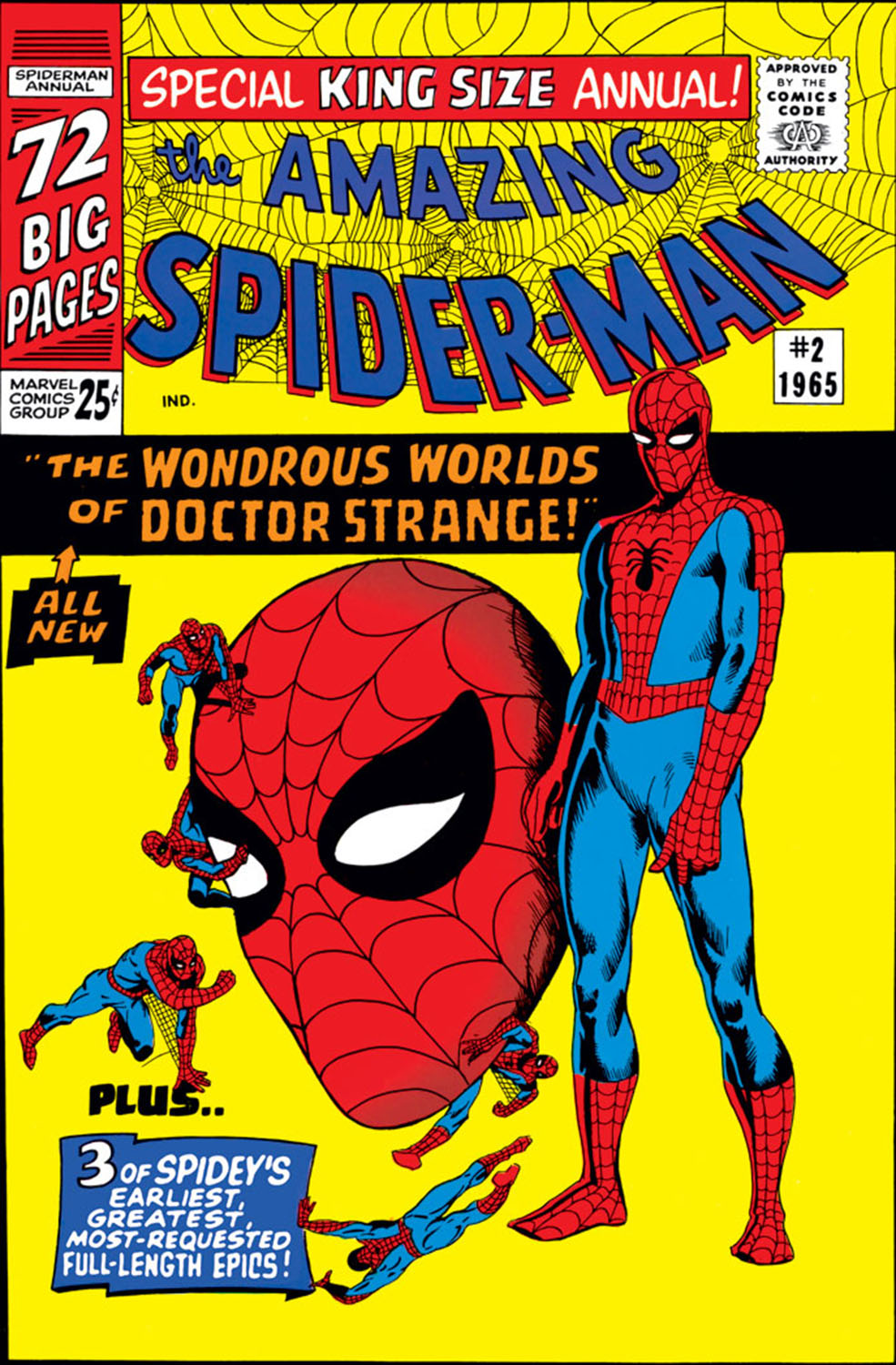
8. Amazing Spider-Man Annual # 2 (1965)
An iconic Spider-Man image by Co-creator Steve Ditko. The artwork almost looks like a pastiche of pin-up art and a character model sheet but the simplicity wins out. It’s direct and showcases Spider-Man’s abilities in the background. The cover is all Spidey and completely ignores the interior story of Spider-Man team up with Doctor Strange (which would have been cool to see on the cover). You can’t really blame Ditko for cheating on the cover, after all he was handling Spider-man, Doctor Strange, and the Hulk at the same time! The cover is a great example of how a strong pin-up can be used as an effective cover.
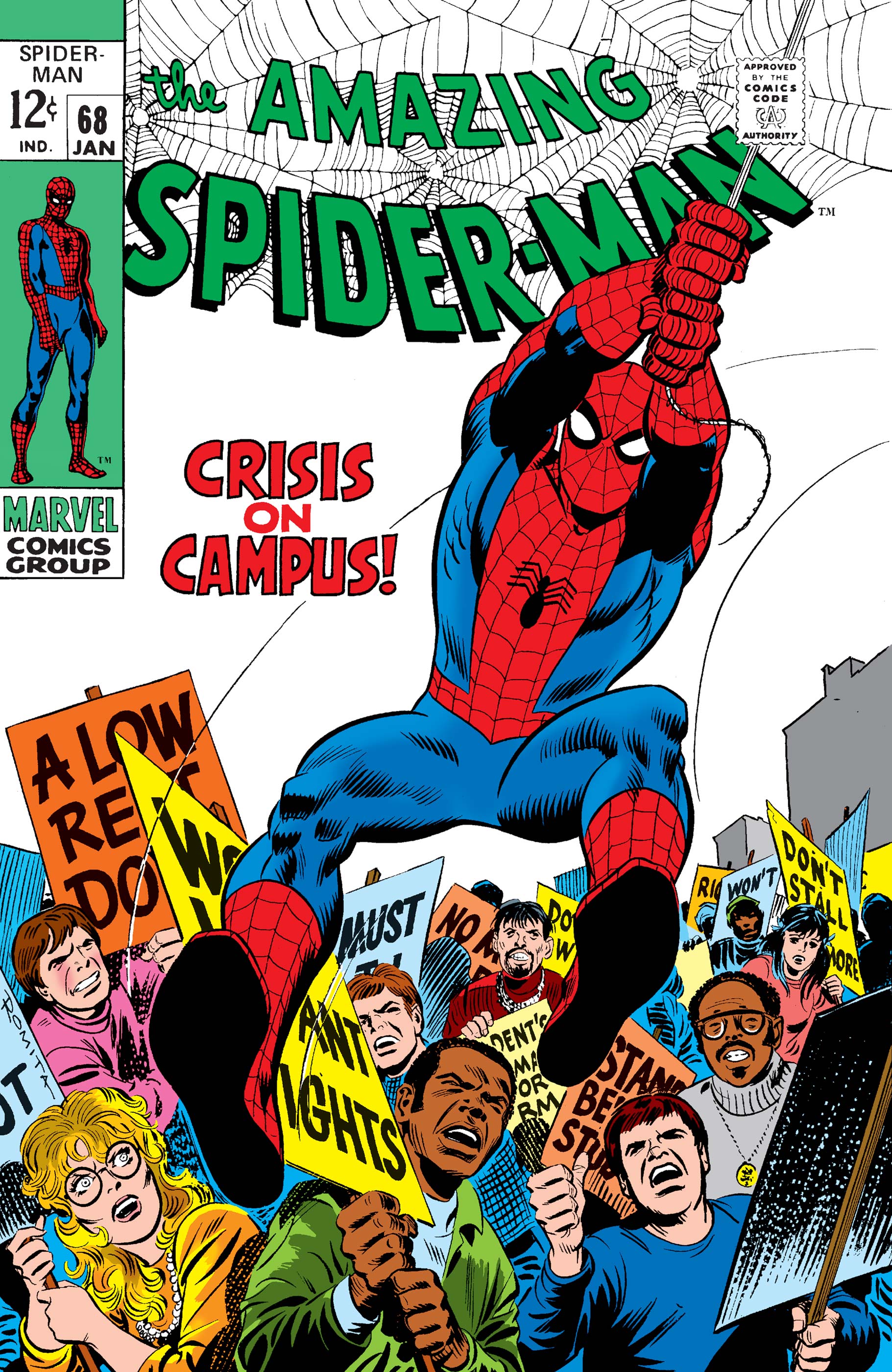
7. Amazing Spider-Man # 68 (Jan. 1969)
Probably the most commercial Spider-Man image ever! Created by John Romita it shows Spidey swinging through a campus riot. The direct and large figure of Spider-Man swinging towards the viewer was an easy win for cut/paste merchandising including tee-shirts, stickers, drinking glasses and just about any knick knack you can think of. Nevermind that the actual comic story was politically relevant at the time addressing civil and social rights on college campus in the late ’60’s.
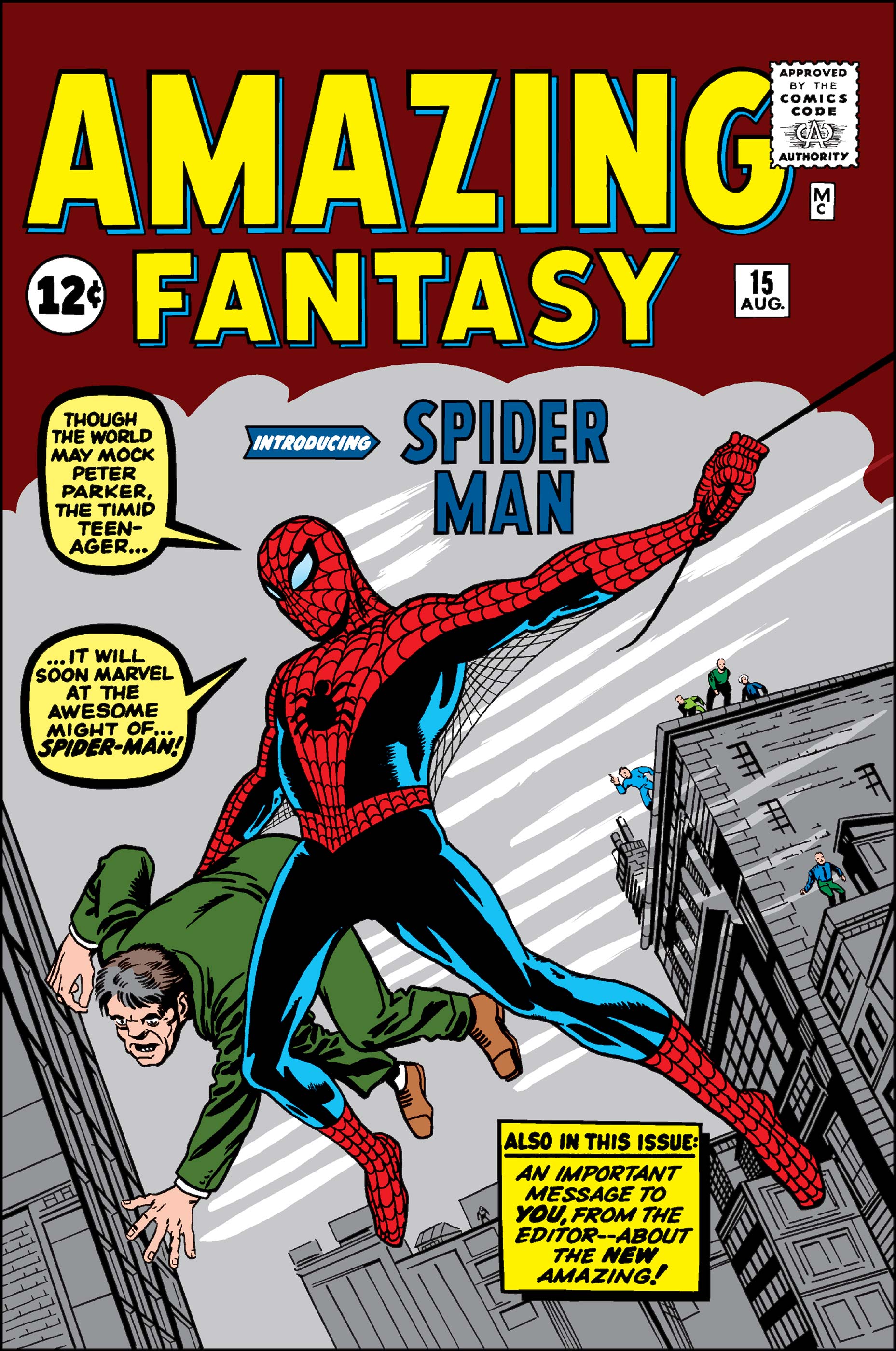
6. Amazing Fantasy # 15 (Aug. 1962)
So here we are, the first appearance of Spider-man with cover art by Jack Kirby. Kirby was originally tapped to work on Spider-Man by Stan Lee but Lee rejected the original concept art and premise. The character was redesigned from scratch by Steve Ditko. Surprisingly, Ditko’s cover to Amazing Fantasy was rejected by Lee, who had Kirby introduce Marvel’s newest super-hero. The cover prominently features Spider-Man front and center web-slinging for the first time. The background depicts New York City shown from a dynamic skewed angle. The entire background is cast in grey to make the blue and red of Spider-Man’s costume pop. Both Kirby and Romita could never grasp the concept of Spider-Man depicted as teenager instead of a man of heroic proportions. In this way the cover to Amazing Fantasy is great but it doesn’t really seem like the Spider-Man we know.
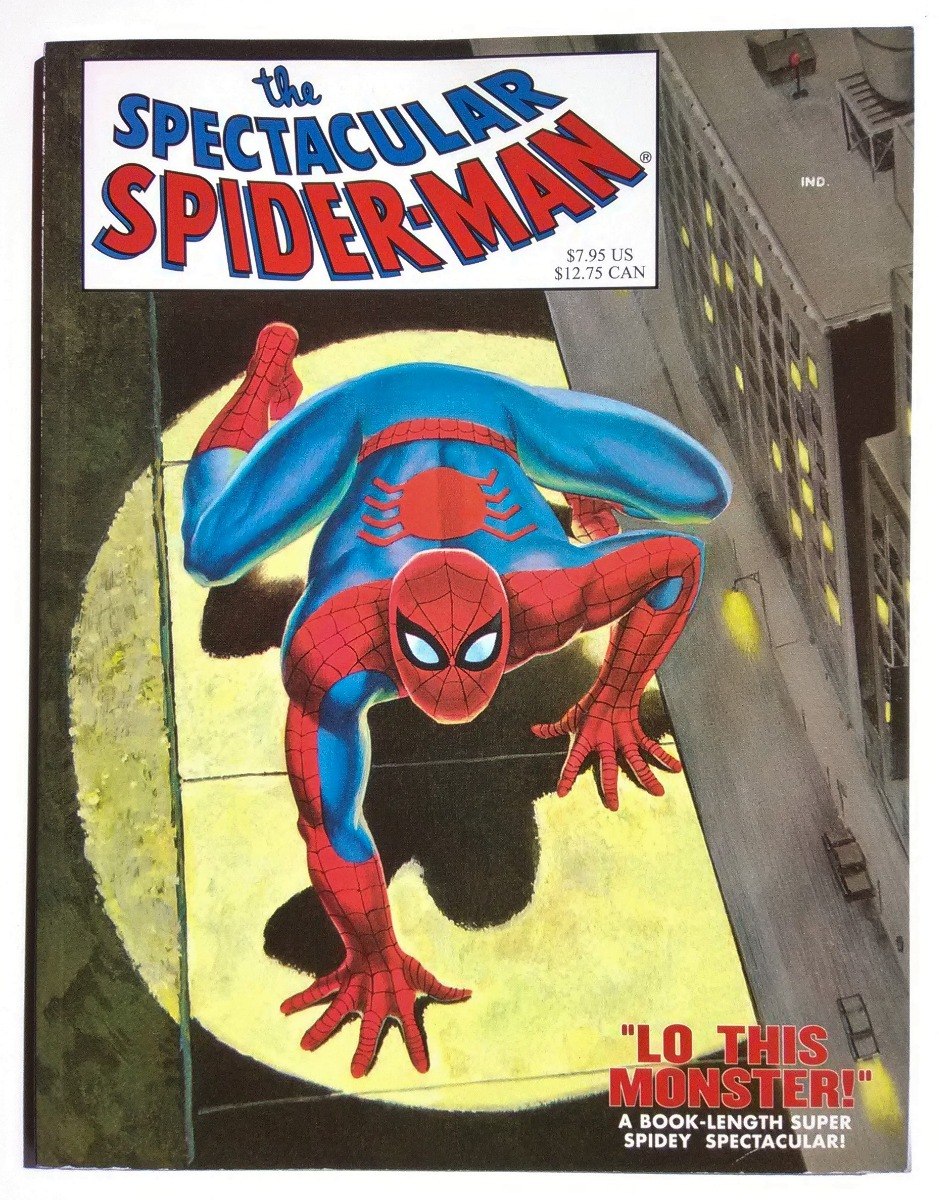
5. Spectacular Spider-Man Magazine # 1 (1968)
This short lived black and white magazine featured a new painted cover by Harry Rosenbaum based on a cover layout by John Romita. The cover shows Spider-Man caught under spotlight. Have the police finally captured Spider-Man at last? The cover entices the viewer to wonder is this the end of Spider-man? This composition has been used several times throughout Spider-man history. It next appears on Amazing Spider-Man # 70 and #100, and of course was done in homage by Alex Ross for Peter Parker: Spectacular Spider-Man # 300.
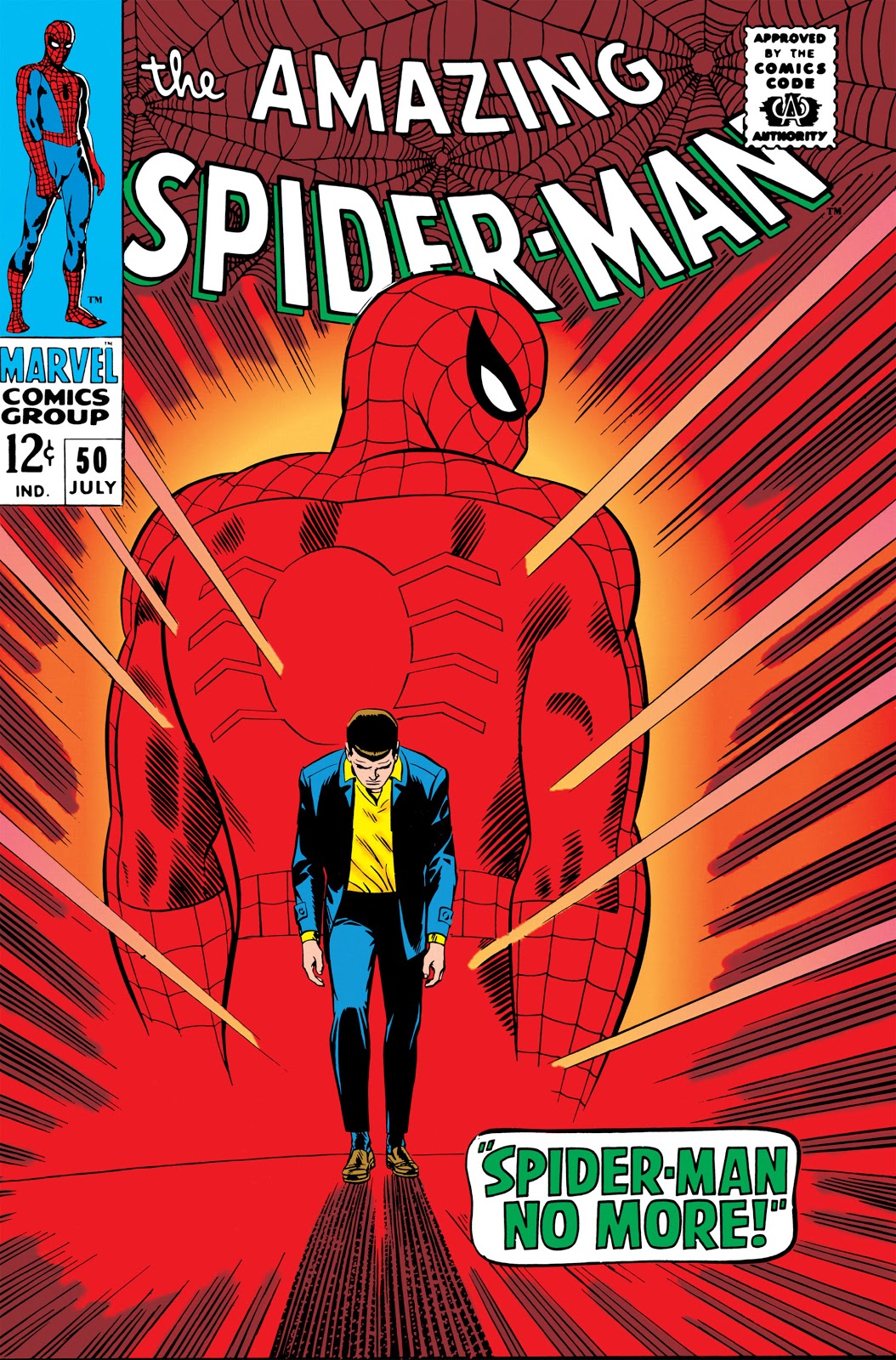
4. Amazing Spider-Man # 50 (July 1967)
You don’t even need the blurb to know that this cover means “Spider-Man No More.” John Romita designed one of the most simple yet compelling covers ever. The illustration depicts Peter Parker parting ways with his Spider-Man persona. For a 5oth anniversary issue, it was the perfect weaving of drama that had been building for years. Has Peter Parker’s life as Spider-Man finally ruined his own? This cover is often regarded as one of the most iconic and deservedly so. The DC offices took note of this one and immediately swiped the concept for Superman # 201 (1967) and repeated it for Action Comics # 368 (1968).
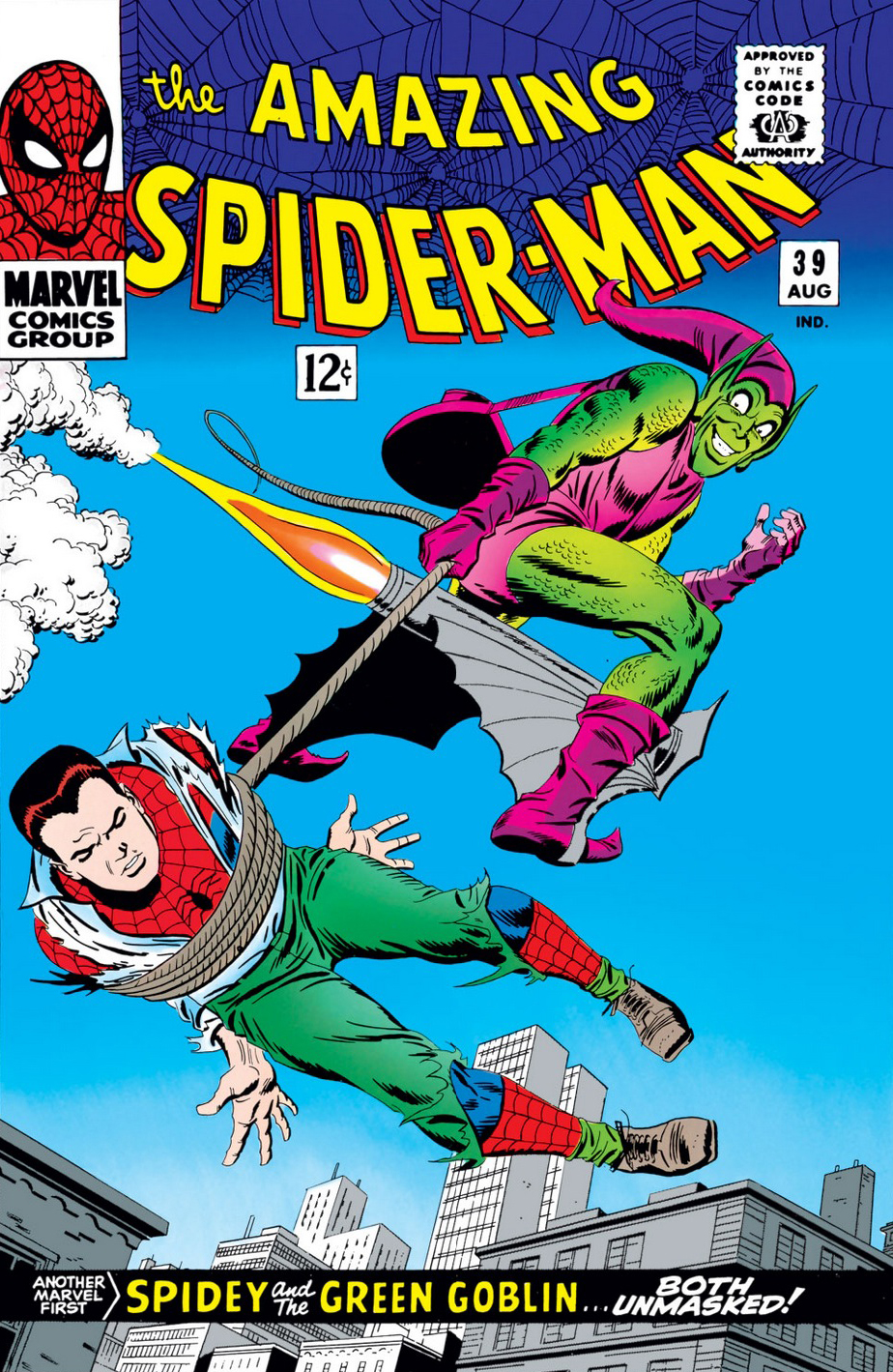
3. Amazing Spider-Man # 39 (Aug. 1966)
Spider-Man unmasked by his nemesis the Green Goblin! Unlike previous failed attempts by many villains, this issue delivers on this cover’s promise, both villain and hero are unmasked! The story marked the first Amazing Spider-Man comic by John Romita in the wake of Co-creator Steve Ditko’s departure from Spider-Man and Marvel Comics. A new era in art direction for Spider-Man begins here!

2. Amazing Spider-Man # 4 (Sept. 1963)
This is the only time the comic panel design was used as a cover for Spider-Man. Steve Ditko perfectly introduces Spider-Man’s newest villain, Sandman as well as displaying Sandman’s strange and deadly abilities. The viewer is already sucked into the story from these four set up images, its almost disappointing that it doesn’t lead directly into page 1 of the comic (which is of course a great introduction splash page that could have been a cover in itself).
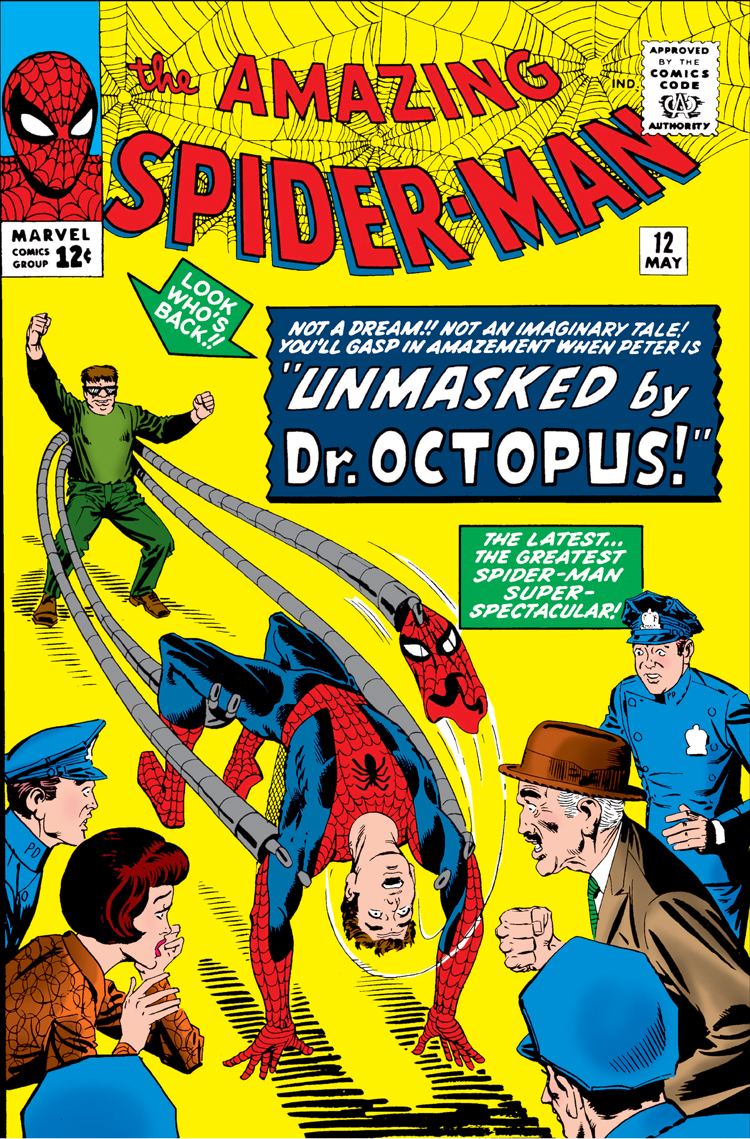
1. Amazing Spider-Man # 12 (May 1964)
And here we have it. The greatest Spider-Man cover of the Silver Age. Spider-Man unmasked as Peter Parker and his identity revealed to the world by one of his greatest villains, Doctor Octopus! Not only does Betty finally discover the truth behind her “kinda” boyfriend’s disappearances and lame excuses but Spidey’s ultimate nemesis, J. Jonah Jameson is there too with a crowd of police to witness the event. A perfect cover by Steve Ditko. This really marks the end of Spidey’s formative years by Stan Lee and Steve Ditko. By this time, Spider-Man’s character and story direction was pretty much established for the next several years and changed very little except with the addition of new villains and expanding cast. I bet you’re dying for me to tell you what happens? To bad, some stories you can only enjoy by experiencing them yourself! That’s the magic of comics.
Let us know in the comment section: What are your favorite Spidey Covers from the 1960’s?
Joshua H. Stulman
Owner, Brooklyn Comic Shop


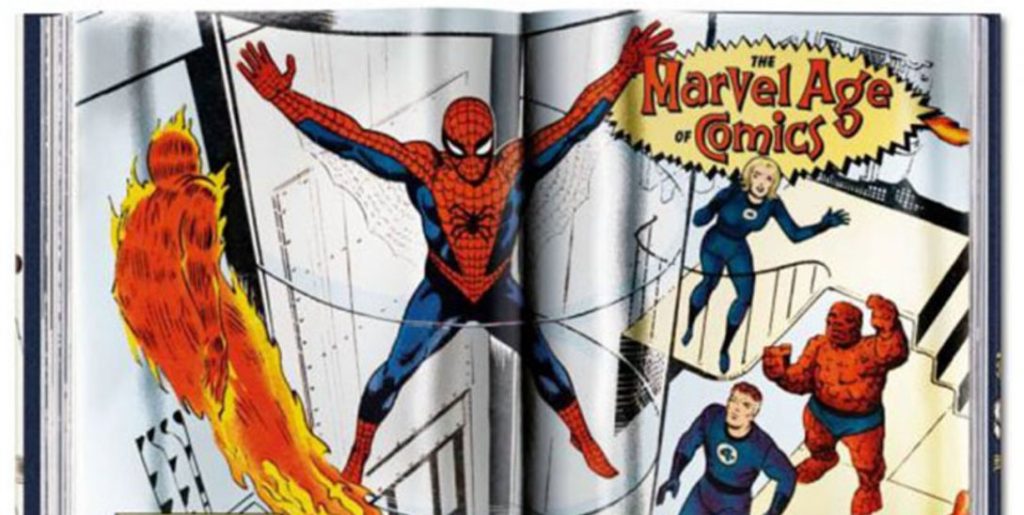

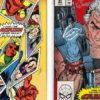






2 Comments
Michael Pagano
Another great article, Joshua. Love them ALL!
Joshua
Thanks Mike! Hopefully, I’ll see you soon at the comic stand!